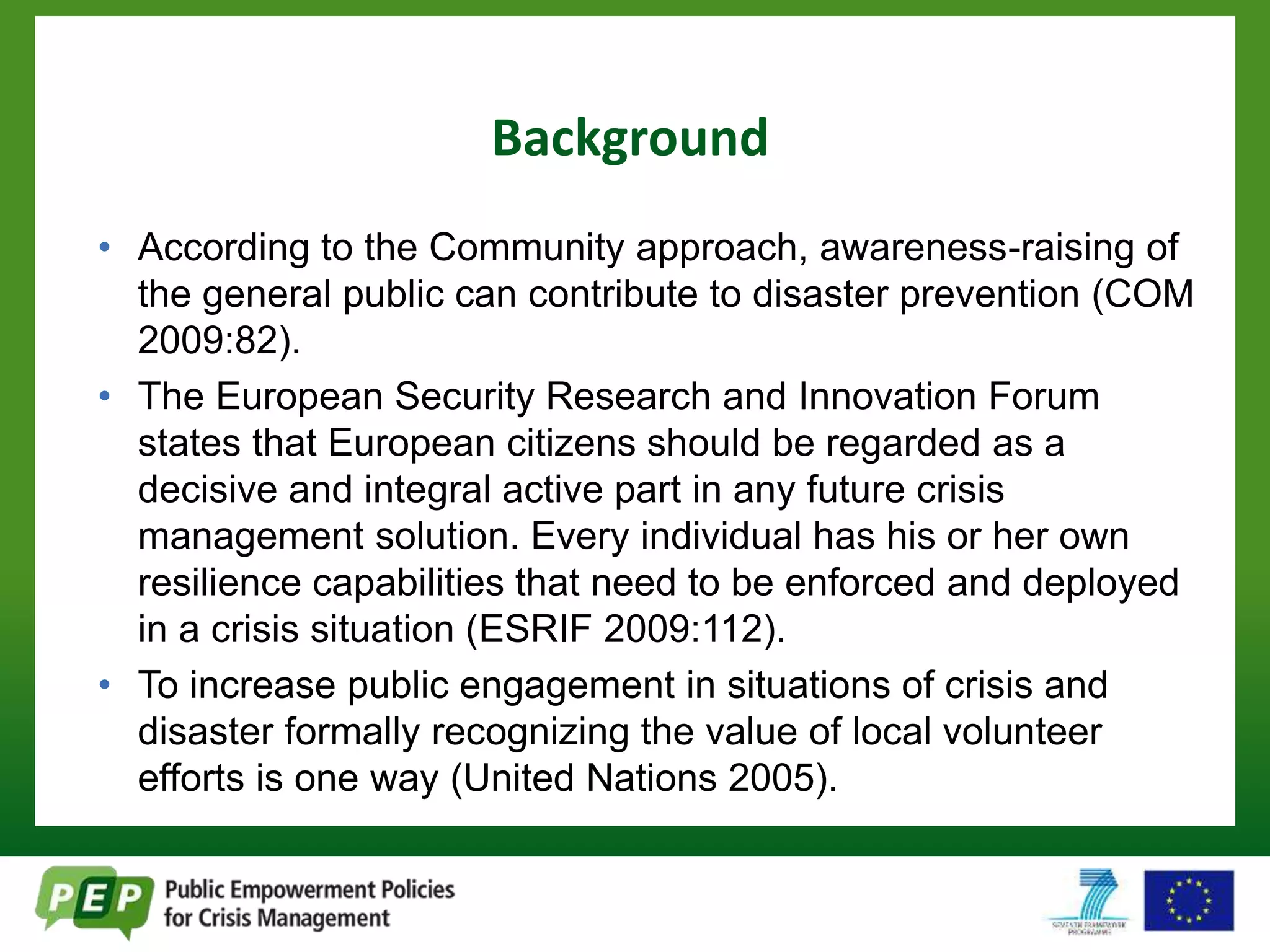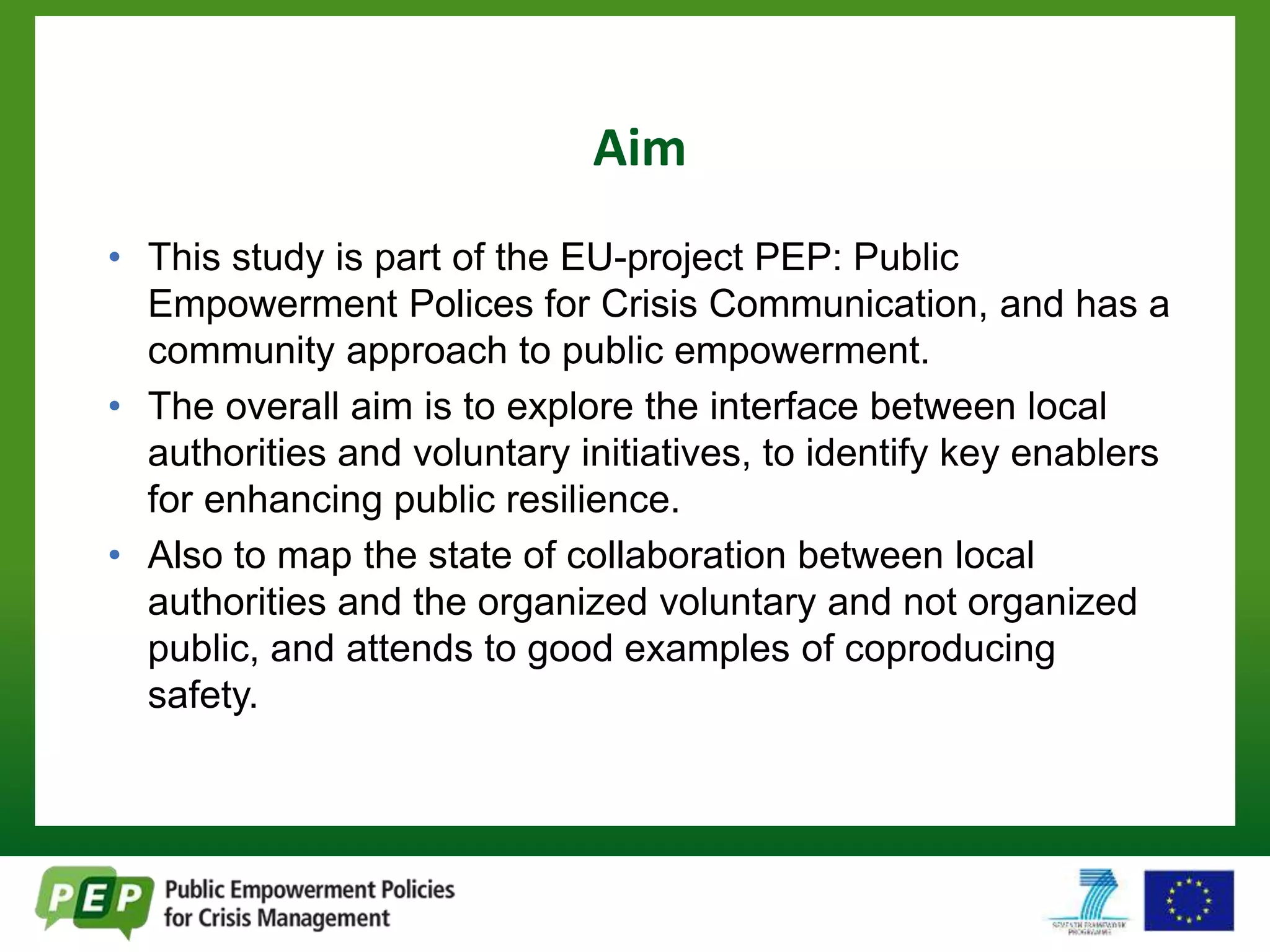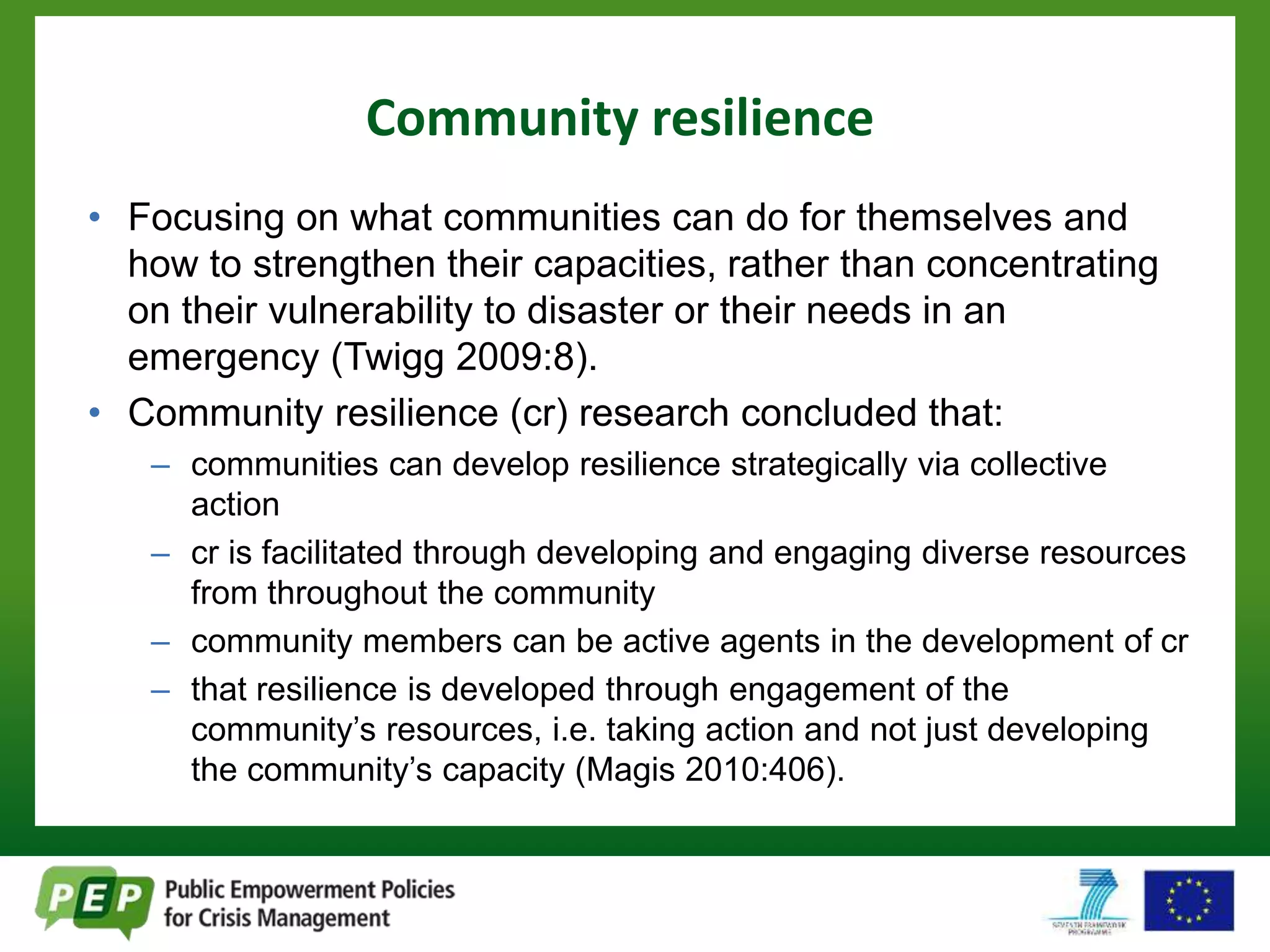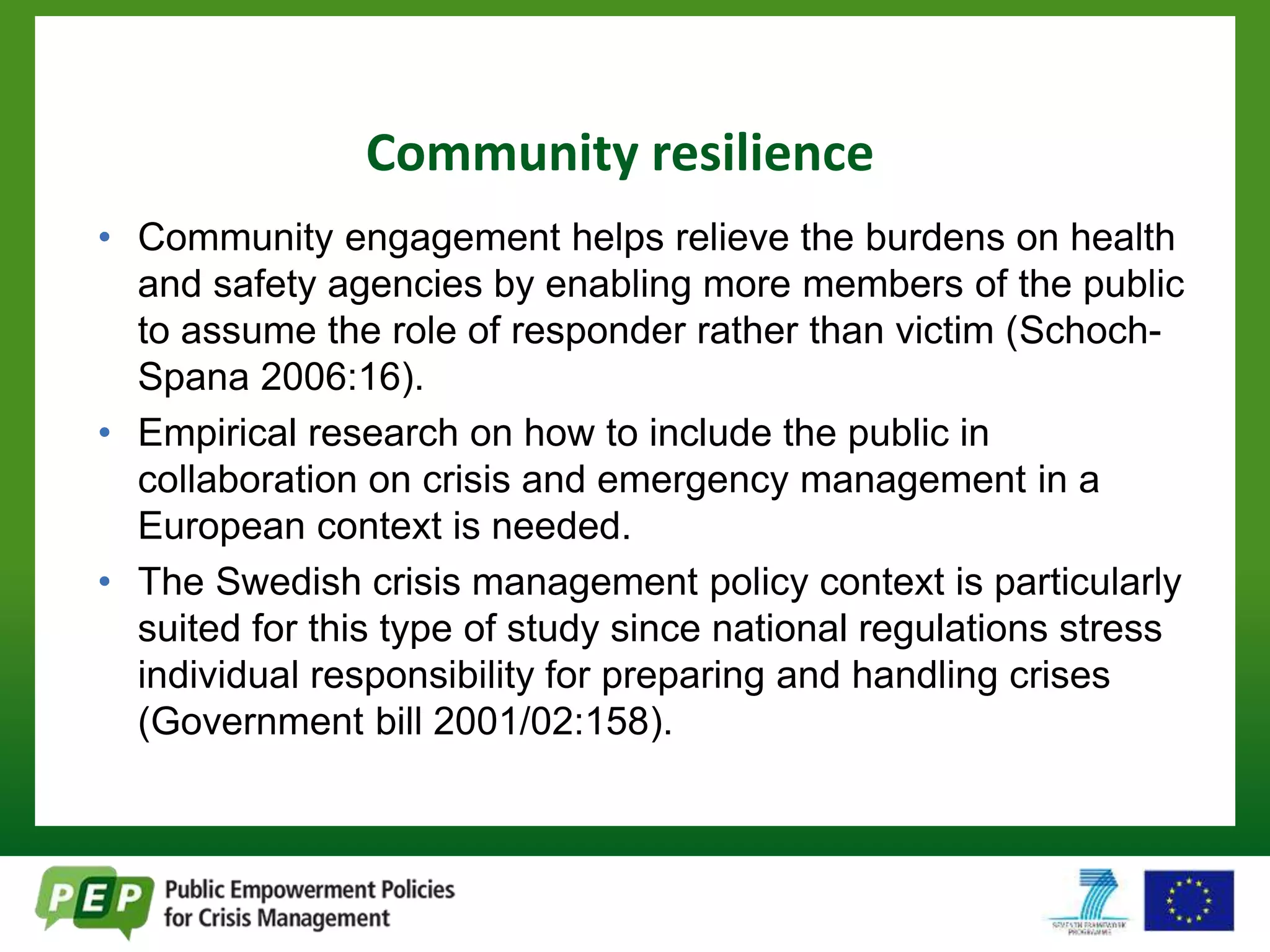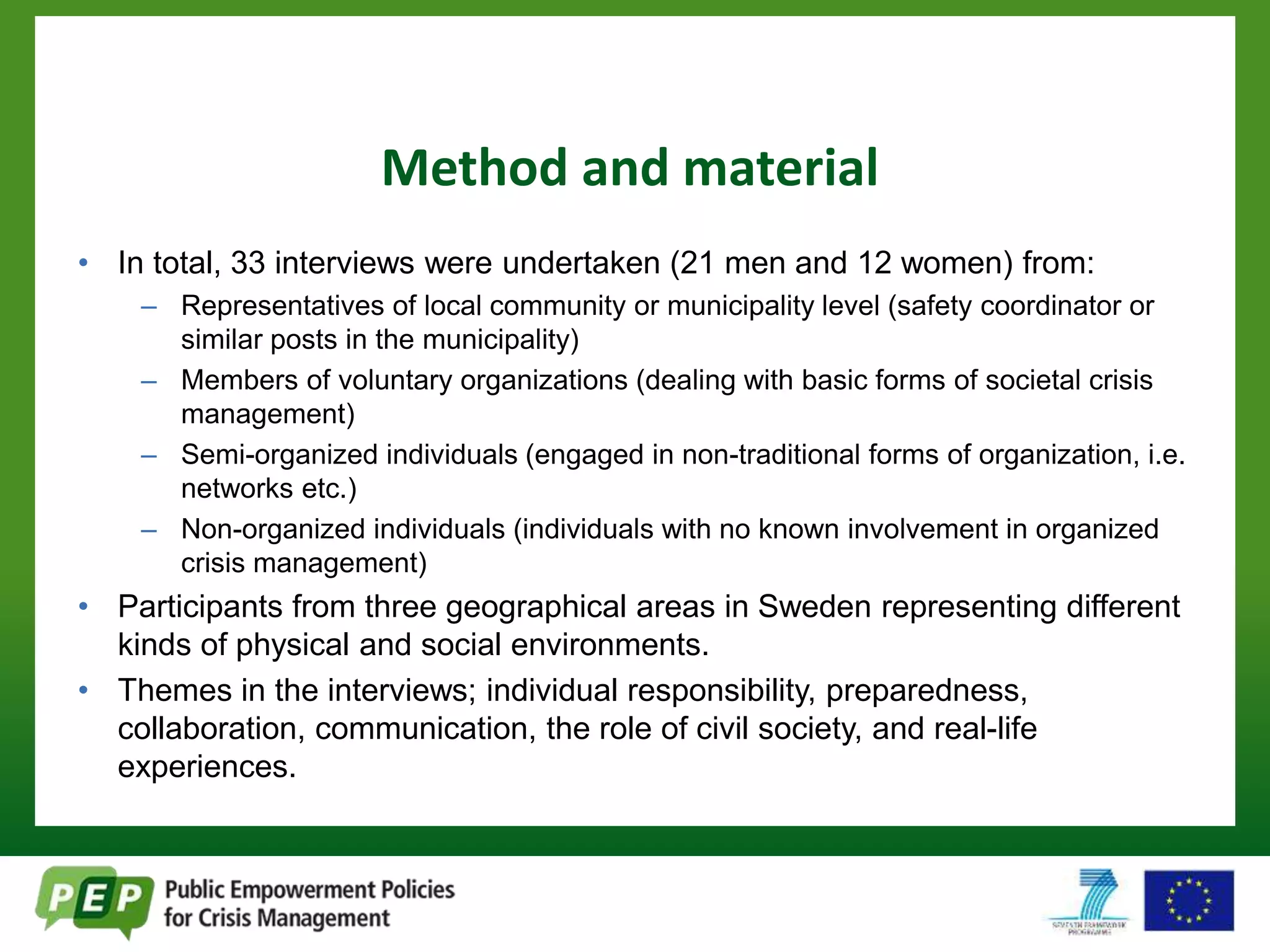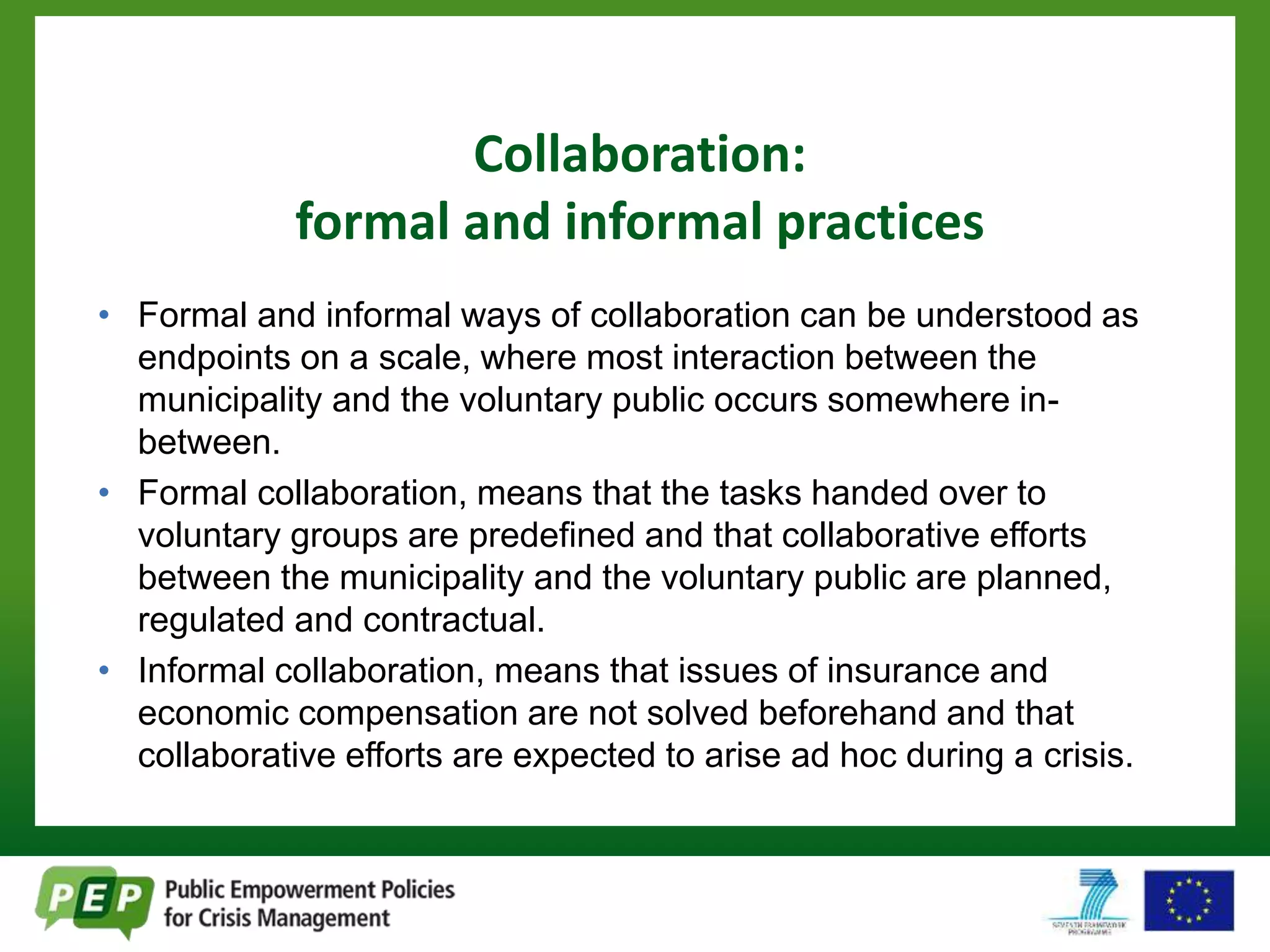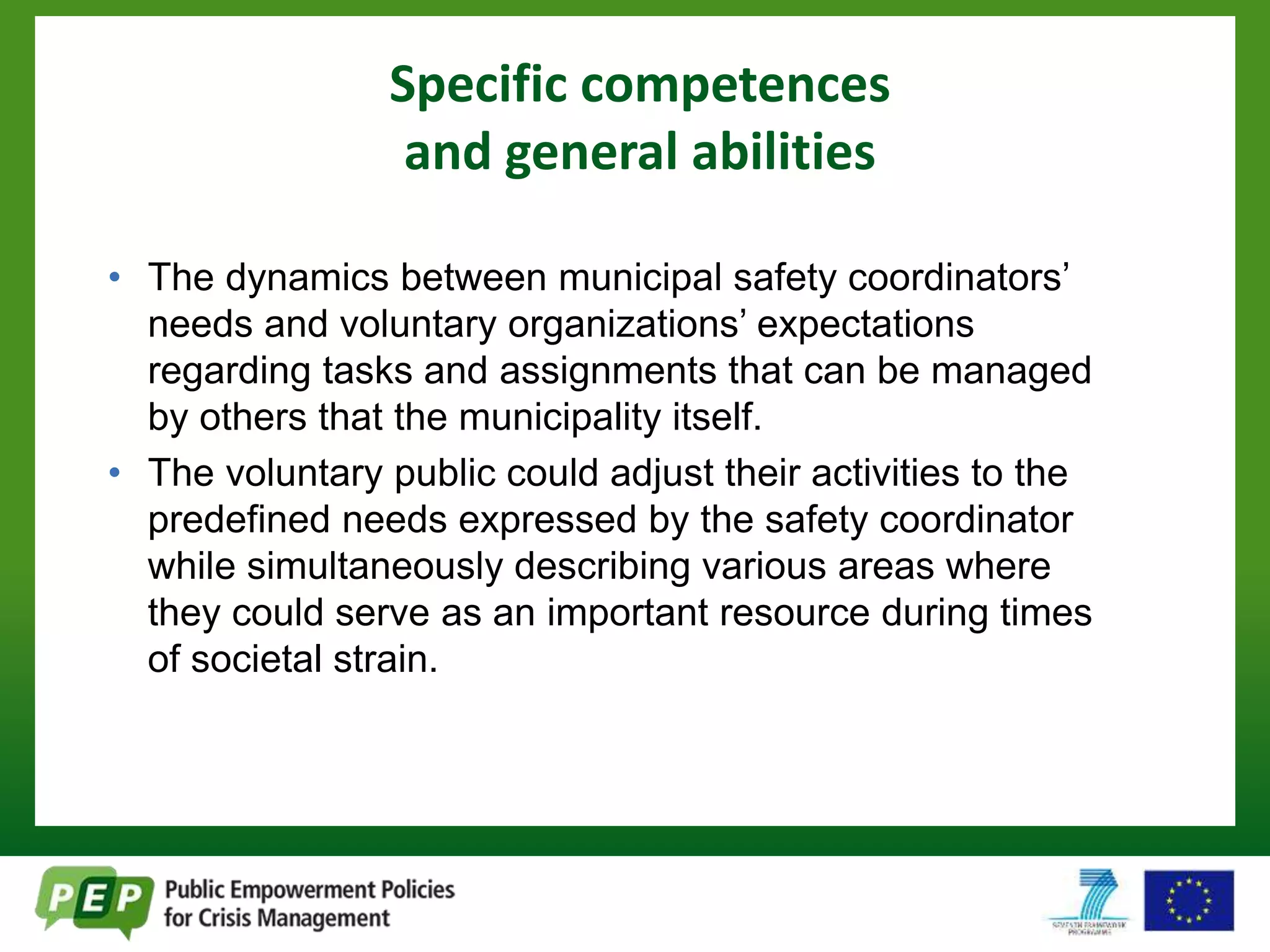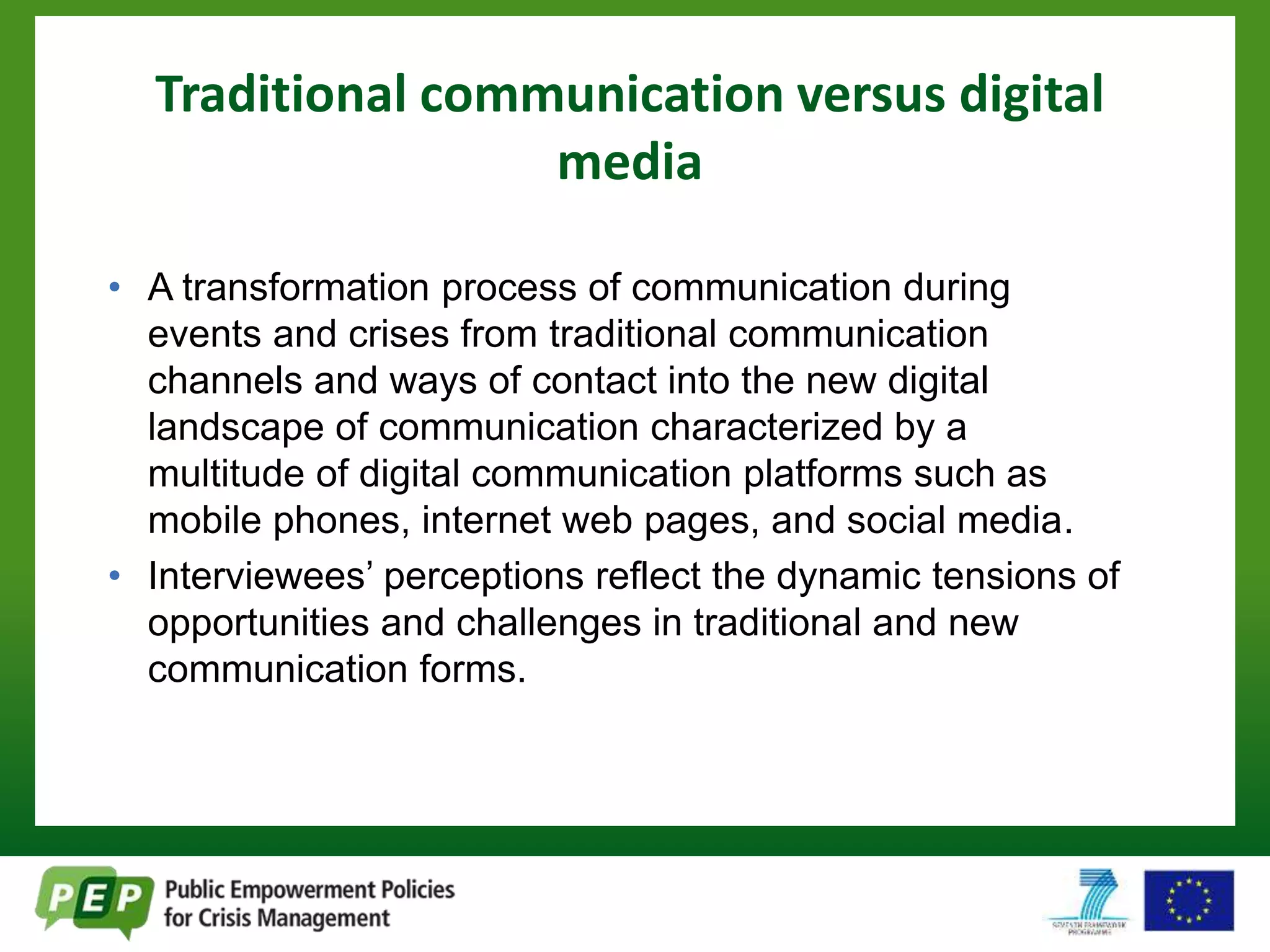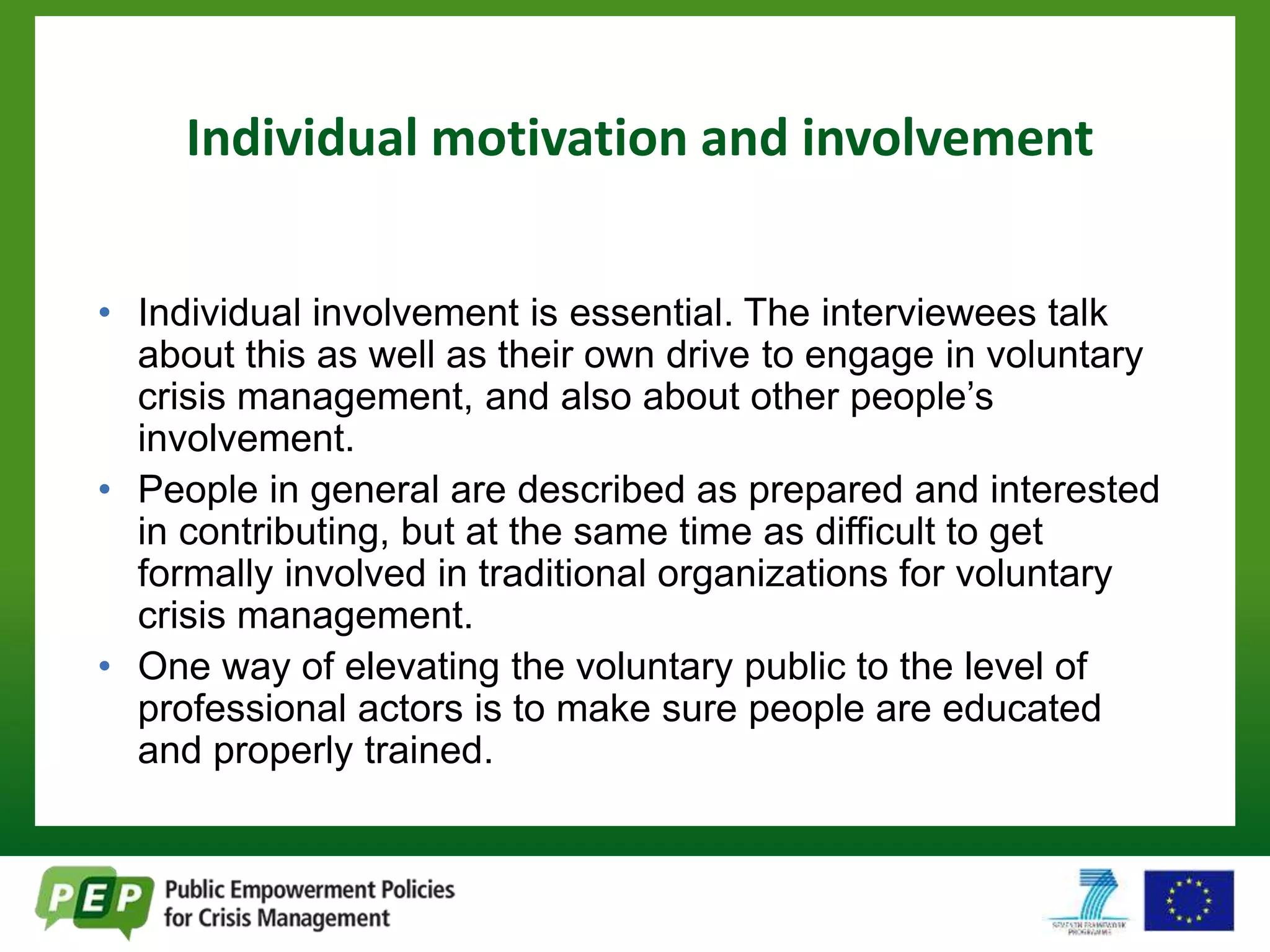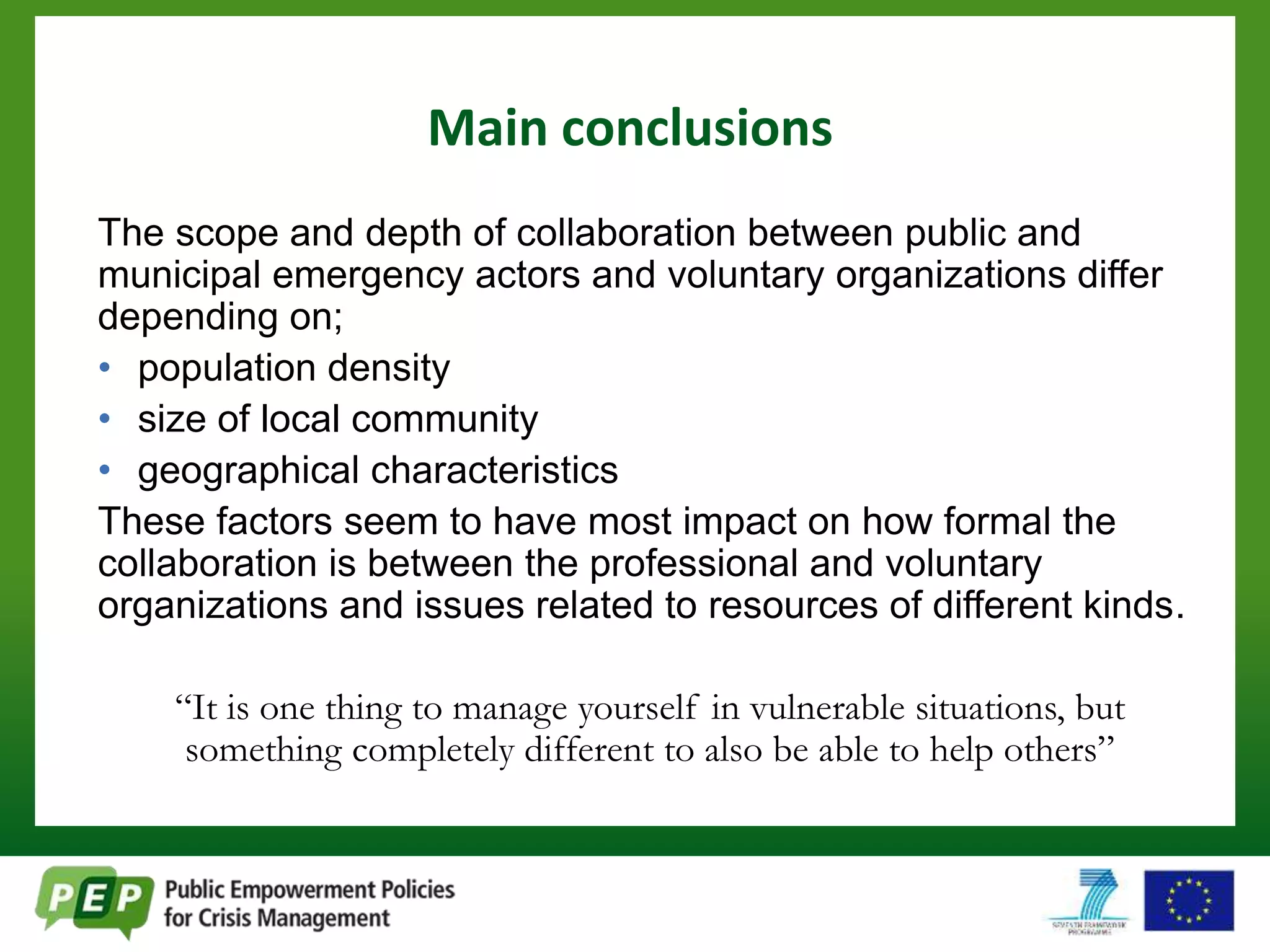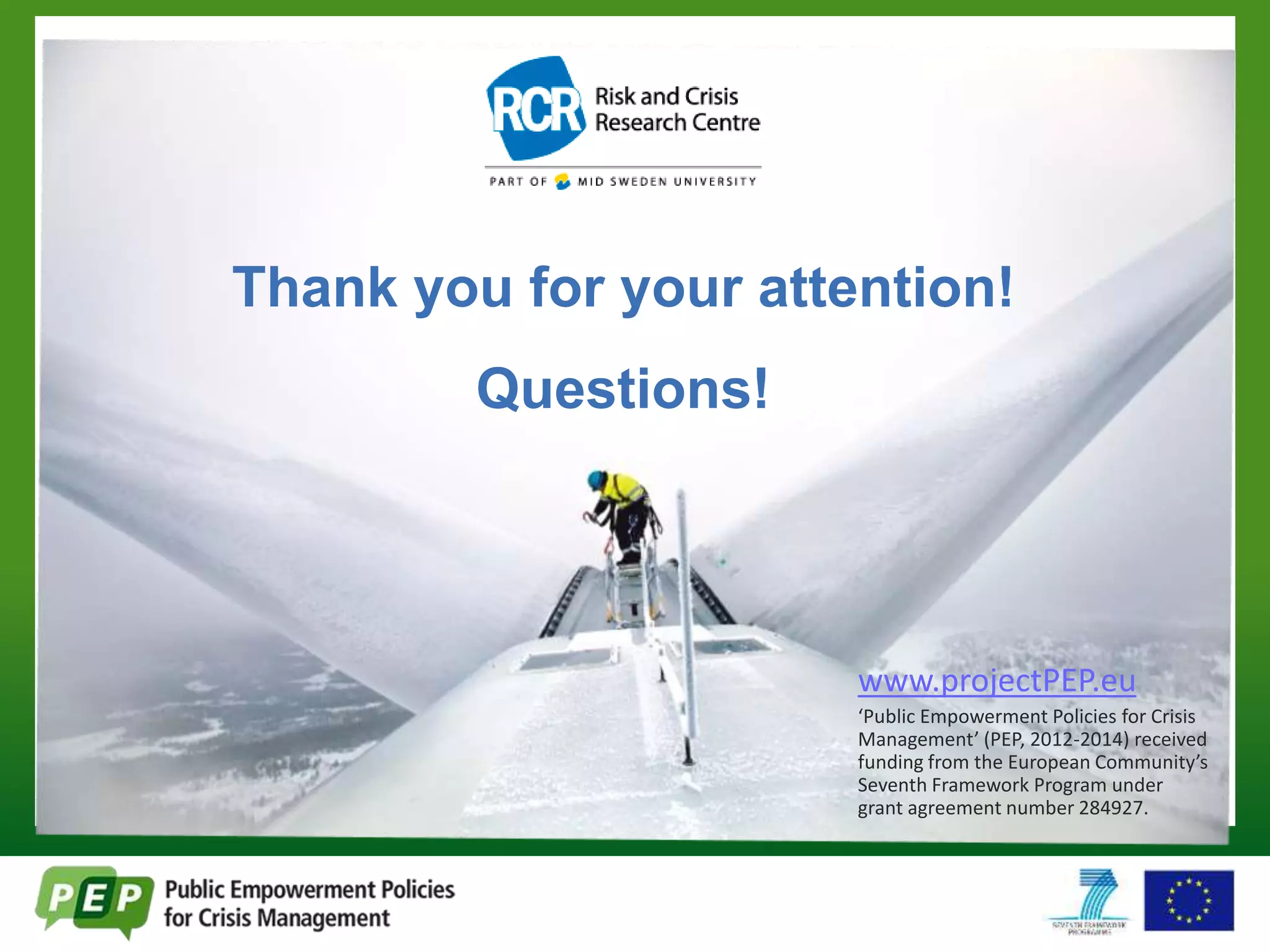The document explores the community approach to enhancing public resilience in crisis management through public empowerment policies, examining the interaction between local authorities and voluntary initiatives. It highlights the importance of individual and collective engagement in crisis situations while analyzing the dynamics of formal and informal collaborations between public organizations and the community. Key findings indicate that factors such as population density, community size, and geographical characteristics significantly influence the scope of collaboration in crisis management efforts.

